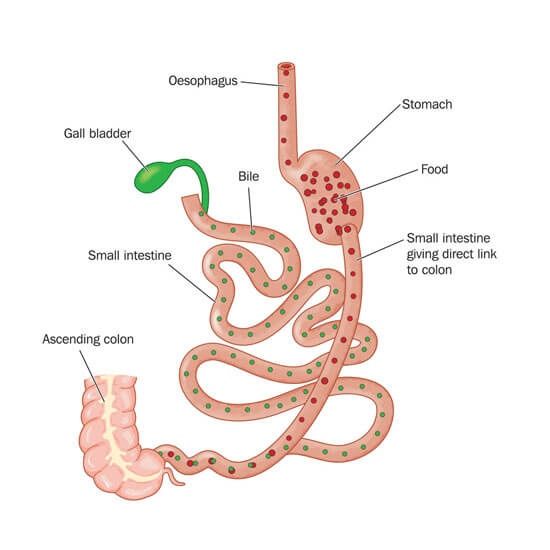Duodenal switch is a procedure with two components. First, a smaller, tubular stomach pouch is created by removing a portion of the stomach. Next, a large portion of the small intestine is bypassed.
The duodenum, or the first portion of the small intestine, is divided just past the outlet of the stomach. A segment of the distal (last portion) small intestine is then brought up and connected to the outlet of the newly created stomach so that when the patient eats, the food goes through a newly created tubular stomach pouch and empties directly into the last segment of the small intestine. Roughly three-fourths of the small intestine is bypassed by the food stream.
The bypassed that carries the gall and enzymes that are necessary for the breakdown and absorption of supermolecule and fat, is reconnected to the last portion of the small intestine in order that they will eventually combine with the food stream.likem the opposite surgeries described above the BPD/DS at the start helps to scale back the quantity of food that’s consumed; but over time this impact lessens and patients are able to eventually consume close to “normal” amounts of food. Unlike the procedures, there’s a big quantity of small intestines that are bypassed by the food stream.
Additionally, the food doesn’t combine with the gall and exocrine gland enzymes down the small intestines. This ends up in a big decrease within the absorption of calories and nutrients (particularly supermolecule and fat) moreover nutrients and vitamins depend on fat for absorption (fat-soluble vitamins and nutrients). Lastly, the BPD/DS, of like the gastric bypass and sleeve surgery, affects guts hormones in a manner that impacts hunger and satiation moreover as glucose management. The BPD/DS is taken into account to be the foremost effective surgery for the treatment of diabetes.





There are no reviews yet.